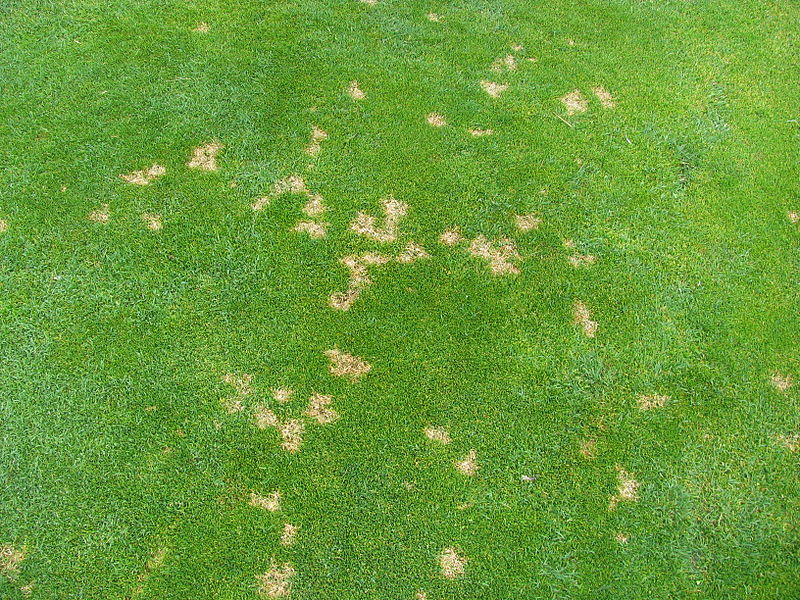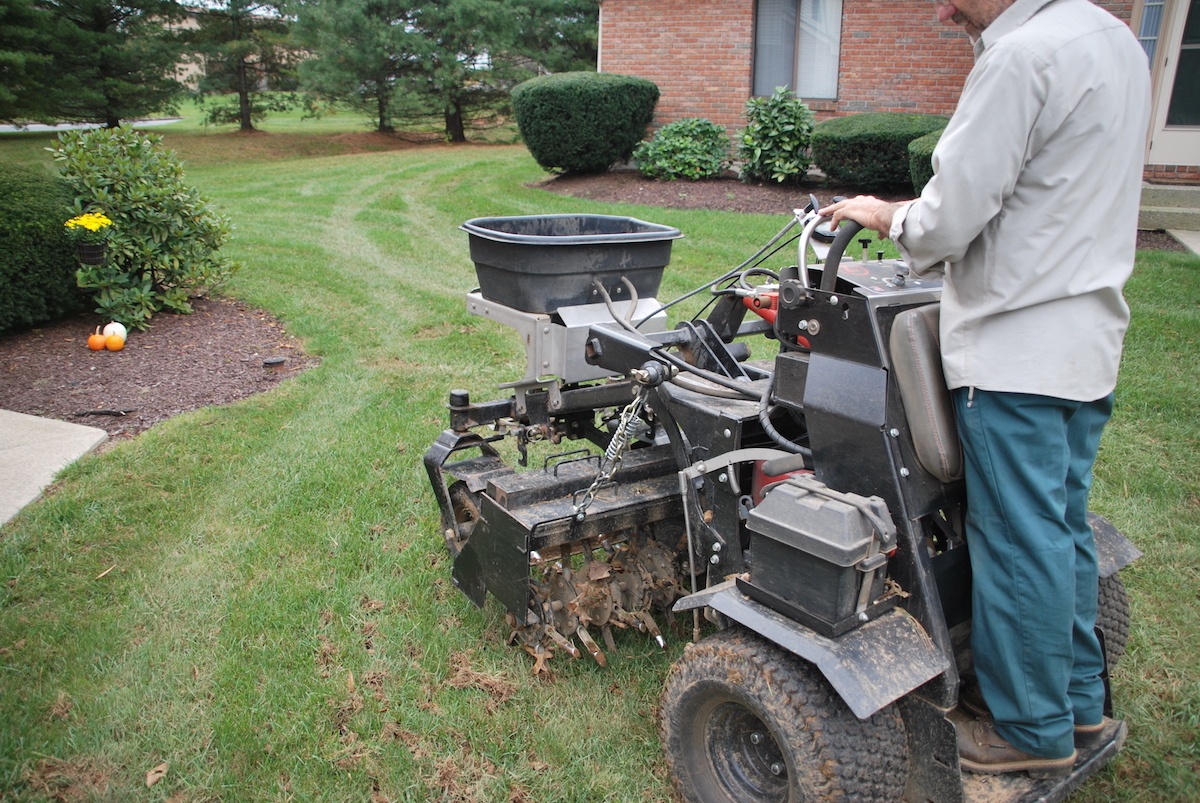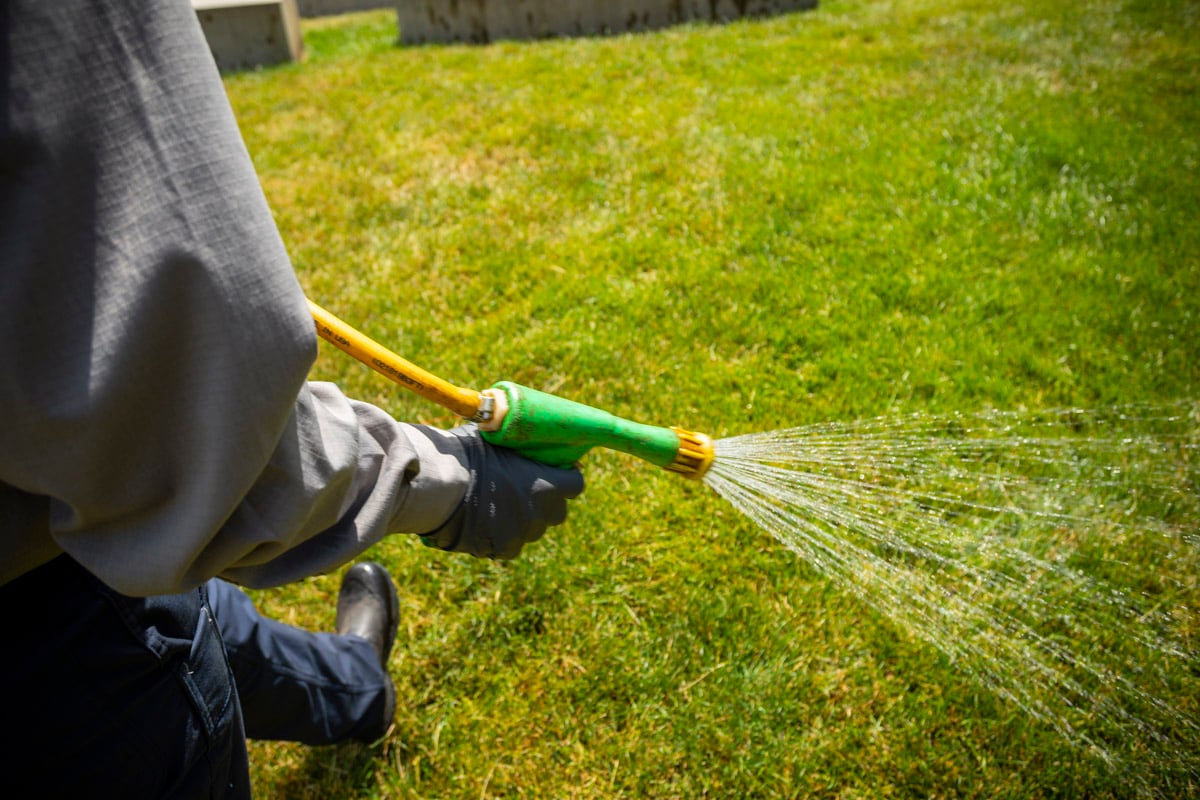Lawns are subject to many potential problems that can harm their health and affect their appearance. If your lawn has patches of discoloration, brown areas, or even bare spots, it’s possible that a lawn disease has attacked it. One of the main problems with lawn disease is that they can move fast. One day you might simply notice a few areas of discoloration and the next, it seems that your entire lawn has been impacted. This is due to the fast-spreading nature of lawn fungus.
This is why it’s important to understand what you might be dealing with and know how to address it.
One lawn disease that we see frequently is dollar spot fungus. In this article, we’ll dive into some helpful information about this disease so that you can know how to respond.
What Does Dollar Spot Fungus Look Like?
This disease actually gets its name from its appearance.
Dollar spot fungus appears as greenish/yellowish colored lesions (or “spots”) that are about the size and shape of a half dollar. You might notice a brown border around each spot.

The trouble is, these spots may start out small but it won’t take very long for them to grow together into larger areas of affected grass.
Sometimes dollar spot fungus also shows up with some webbing called “mycelium.” This has a silver appearance to it and is typically most noticeable in the early mornings amongst the dew.
What Causes Dollar Spot Fungus?
Dollar spot fungus is caused by the fungus Clarireedia jacksonii (formerly Sclerotinia homoeocarpa).
While there is a misconception that lawn disease only attacks poorly managed lawns, this is not the case at all. ANY lawn can be susceptible to a lawn disease if the conditions are right. The only difference is that a healthy lawn will be able to better defend itself against disease.
A lawn that is already thinned out and struggling is going to be much more likely to really be attacked by a lawn fungus, like dollar spot fungus.
We’ve explained in previous articles how the “lawn disease triangle works,” but here is a refresher.
Disease occurs from three factors: a disease-causing organism (lawn fungus), a susceptible host (grass species), and a favorable environment (moist, warm weather). Recognizing there may be more to your problem than just a disease is important.
You may need to not only treat the disease, but you may also need to improve your lawn’s overall health in order to truly solve your problem.
How to Treat Dollar Spot Lawn Disease
As with most lawn diseases, dollar spot fungus can be treated with fungicide treatments. Because dollar spot is usually very fast-spreading, dollar spot fungus treatment often does make sense.
But it’s important to understand how fungicides work. They do not fix the damage that has already been done. Fungicides simply stop lawn fungus from spreading further.

Either way, you’ll still potentially need to do something about damage that already occurred (depending on how bad it is). This might mean aeration and overseeding to fill in those bare spots.
Typically, fungicides are effective for approximately 21 days and then need to be reapplied.
While you might be tempted to handle lawn fungus control on your own, we would advise strongly against it. Though there are products at the big box stores to handle disease, it really does take an understanding of disease specifics to know which product will work best on the specific disease your lawn is facing.

Many lawn problems have overlapping symptoms and it’s not always obvious what you’re dealing with. It’s important that your specific lawn problem has been diagnosed by a professional and that you’re implementing the right treatment.
Growing a Stronger Lawn
While diseases are sometimes inevitable, even with your best efforts, growing a healthy and thriving lawn is still a vital step in disease management.
That’s because, as we mentioned earlier, a thick lawn will be able to better defend itself against problems.
But a lawn that is already thin and patchy is really going to struggle if it also gets attacked by disease.
Getting your lawn started on a comprehensive lawn care program with vital services like lawn fertilization and weed control can help produce a thicker, healthier turf. And if a disease does creep in, you’ll already be working with professional lawn care services that can take quick action.
At Joshua tree, we always tell our clients to get in touch with us at the first sign of trouble. Since many lawn diseases can be fast-moving, we want to give you options that will keep things on track.
We value communication with our clients and view the best possible lawn care as a two-way street in which the client is regularly communicating with us and we’re regularly communicating with them. It is this ongoing partnership that will ensure a lawn disease diagnosis is made early and in time to be treated when necessary. Our goal is to provide the best possible lawn care and we can’t do that without your help.
With the right care for your lawn, you’ll gain valuable peace of mind. If you’re interested in having your lawn inspected and its health assured, contact us for a free quote or give us a call at 833-JTE-TREE.
Image Source: Dollar Spot



